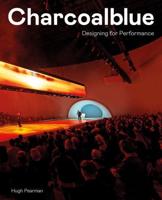Publisher's Synopsis
There are two main architectural genres in Iran and in Germany. While a clay architecture has been very common in Iran, a stone architecture is widely used in Germany. However, the clay architecture in Iran is being replaced by modern buildings in recent decades due to a rampant urbanization. Although some of the traditional buildings in Iran have been renovated and protected by the Cultural Heritage Organization amid international sanctions and limited budget available for the preservation, many others are almost endangered species in the world of architecture.
One main reason to give importance to the subject of castles, either in Iran or in Germany, is the self-sufficiency system of living up to about 100 years ago. A simple, or may be primitive, style of living in castles for centuries contributed to the survival of many races of mankind at a time that no modern features, such as cooking oven, air-conditioner, electricity, light, mobile phone, TV, radio, or computer, existed. People lived in castles and fulfilled all their needs. Therefore, castles in Iran and in Germany, being built many centuries ago, are a good subject for a recording as well as for a pictorial display. The present work, therefore, is a comparative display of selected castles in Iran, being collected in the past fifteen years, and castles in Dortmund, Heidelberg, and Munich in Germany. Although many isolated images of the castles in Iran and in Germany are presented in different books and in Google, but no work, up to the present time, has made a comparative display of the castles in Iran and Germany in one book. The revised, 2021 edition of the present work, therefore, is the first original source which displays and puts on record main parts of the famous castles in Iran and in Germany to show the art and skill of builders of the two architectural genres in two different geographical territories.







